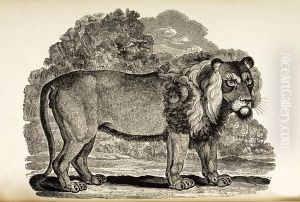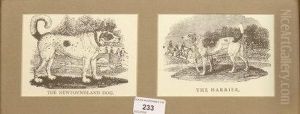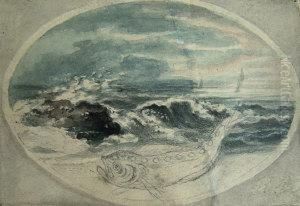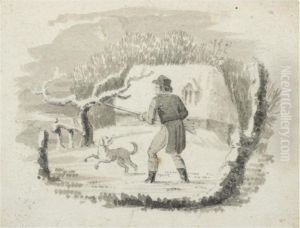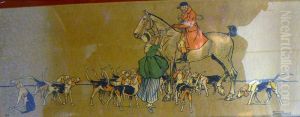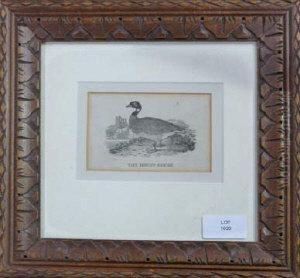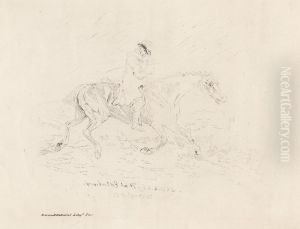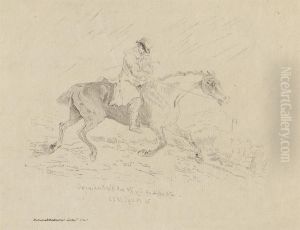Thomas Bewick Paintings
Thomas Bewick was an English engraver and natural history author, renowned for his work on woodcuts, especially those depicting wildlife. Born on August 12, 1753, in Cherryburn, Mickley, Northumberland, Bewick was apprenticed to Ralph Beilby, an engraver in Newcastle upon Tyne, at the age of 14. Under Beilby's tutelage, Bewick honed his craft and eventually became a partner in the business. His innovative approach to wood engraving, particularly his development of white-line engraving, which allowed for greater detail and subtlety in the images, significantly advanced the art form.
Bewick's most notable works include 'A General History of Quadrupeds' published in 1790, and 'History of British Birds,' published in two volumes (1797 and 1804), which are considered his magnum opus. These books were not only important for their biological content but also for their artistic merit; they featured hundreds of Bewick's woodcuts illustrating the various animal species. His work on these publications earned him widespread acclaim and established him as a leading figure in natural history illustration.
Bewick's style was characterized by his keen observation of nature and ability to depict animals with personality and vitality. He was a pioneer in using wood blocks made from the end grain of hard woods, which allowed for finer detail and more durable blocks. His influence extended well beyond his own time, with his techniques and approach influencing the development of wood engraving in the 19th century. Bewick's legacy also includes his apprentices, such as Luke Clennell and Robert Johnson, who carried on his techniques and artistic vision.
Thomas Bewick's contributions to both the art of engraving and the field of natural history were significant. He elevated wood engraving to a form of fine art and set new standards for the illustration of natural history texts. Bewick died on November 8, 1828, in Gateshead, leaving behind a body of work that continues to be appreciated for its artistic beauty and scientific value.
